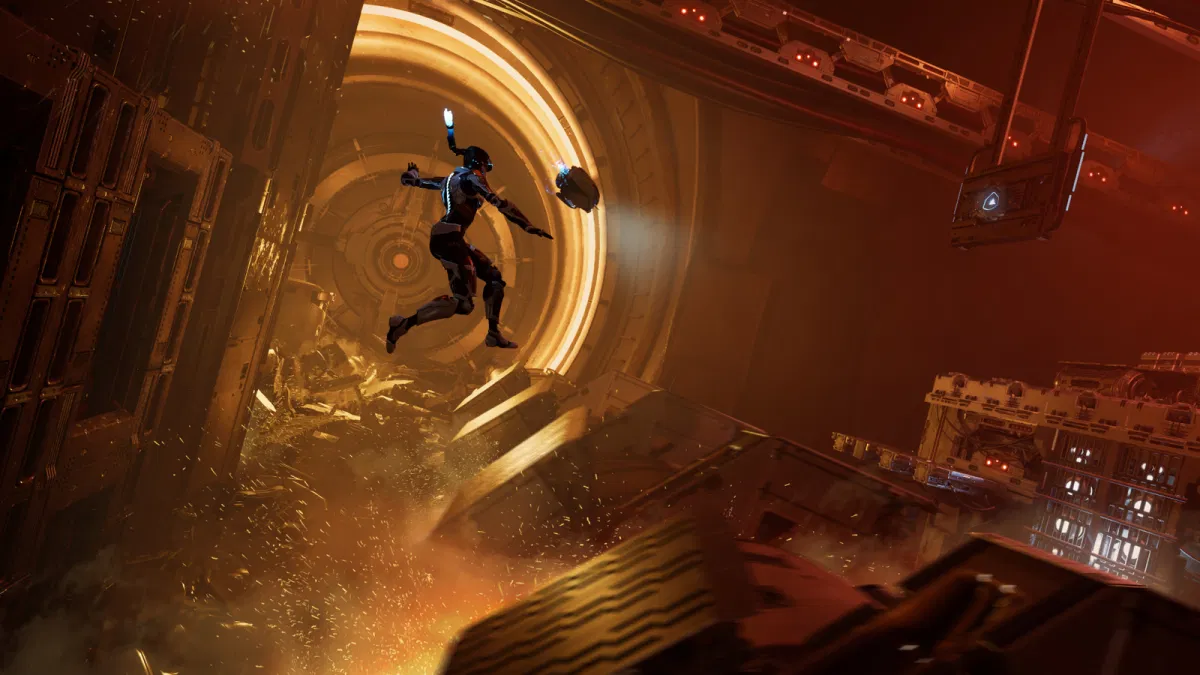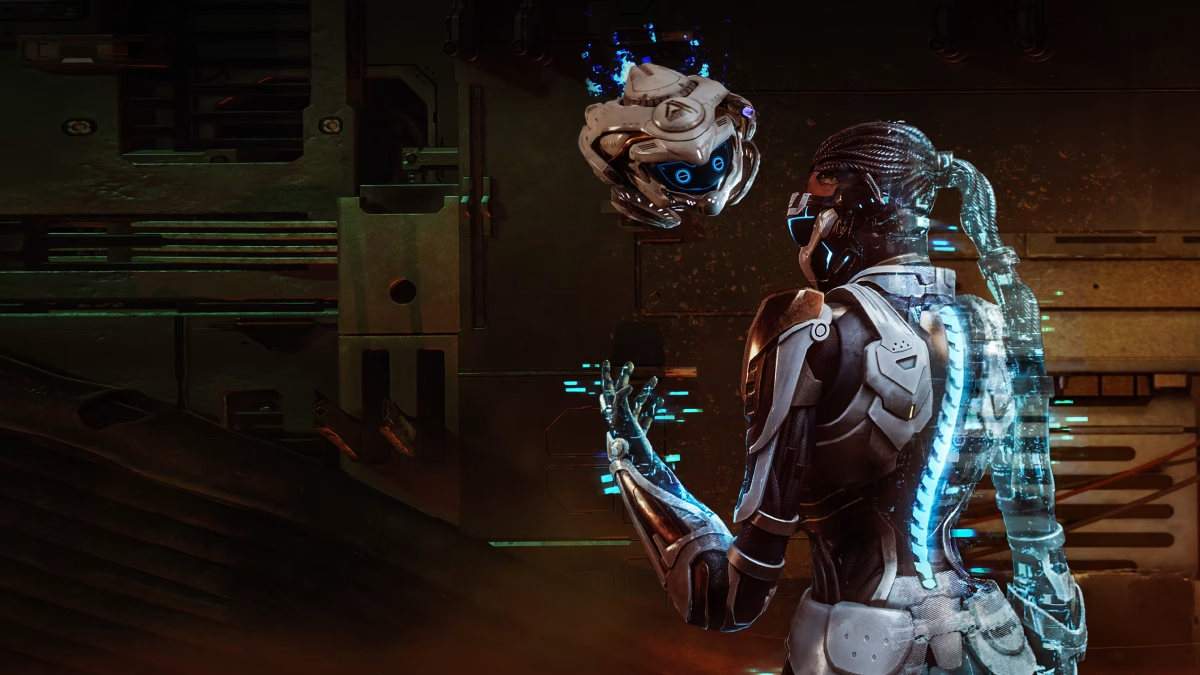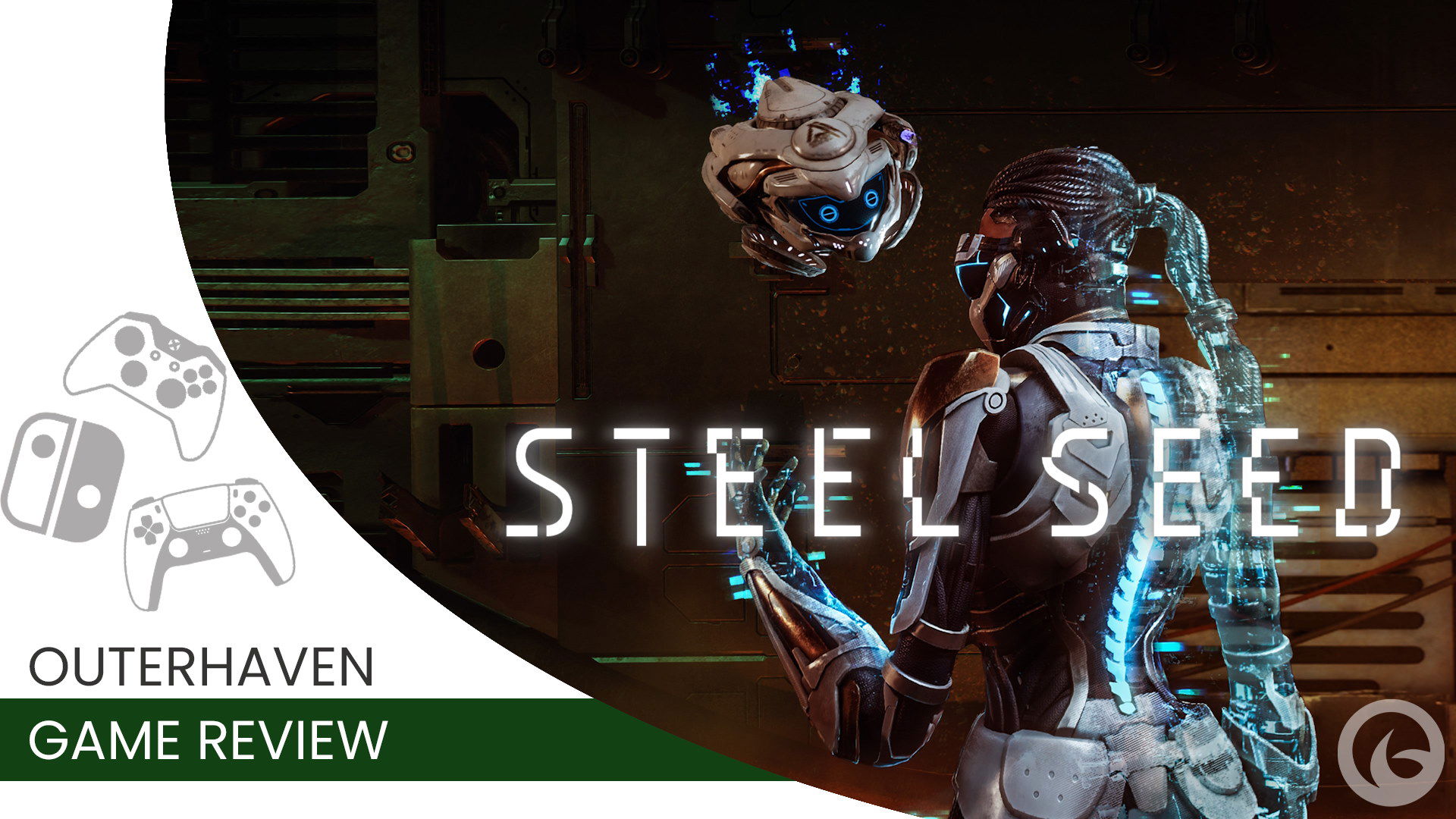Steel Seed is a stealth-action adventure game from Storm in a Teacup, the creators of Close to the Sun. Set to release on April 22, 2025, for PC, PlayStation 5, and Xbox Series X/S, the game plunges players into a dark, post-apocalyptic world where humanity teeters on the brink of extinction. In this desolate setting, machines have taken control, and the remnants of human civilization are hidden within a vast underground facility—one built for machines, not humans.
How does this all play out? Read on!
Game Name: Steel Seed
Platform(s): PC, PlayStation 5, Series X|S (Reviewed), Switch
Developer(s): Storm in a Teacup
Publisher(s): ESDigital Games
Release Date: April 22, 2025
In Steel Seed, you play as Zoe, a character who has just awoken without any idea where she is. All she knows is that she wants to find her father—the last person she saw before being placed into an induced coma. As she tries to traverse a land completely unknown to her, you’ll encounter both allies and enemies along the way.
The game’s environment is a haunting blend of industrial landscapes and eerie biodomes. Each region offers its own environmental storytelling, hazards, and secrets. The facility’s design emphasizes the alien nature of a world built by and for machines, creating an intense sense of isolation and tension as players explore its depths.
Gameplay Mechanics
Steel Seed offers a unique blend of stealth, parkour, and dynamic combat. Zoe is equipped with a laser sword and can fluidly traverse the environment using her parkour abilities. The game encourages players to use shadows, distractions, and environmental advantages to evade or eliminate threats. For those who prefer direct confrontation, Zoe’s combat is supported by upgradeable abilities spread across three distinct skill trees, offering 40 different upgrades.
Combat is smooth, if a bit simple. One button handles light attacks, another for heavy, along with a dodge. It’s classic hack-and-slash—so don’t go in expecting something Soulslike. That said, integrating Koby’s attacks and skills is where the gameplay really starts to come alive.
The environments are visually stunning, but also very dark. At one point, I had to increase my screen’s brightness just to see anything—it was that dim.

Parkour is another element of this game that, at times, works well—but occasionally reveals that this is Storm in a Teacup’s first foray into this type of gameplay. Jumping from ledge to ledge feels tight and responsive, but the wall-running mechanics leave a lot to be desired.
The hack-and-slash combat is solid but can become repetitive over time. Unfortunately, the game often boils down to a simple loop: enter a “room” or “space” that is either a parkour challenge or filled with enemies, then choose how to approach it. Most of the time, I found the easiest way around the AI was simply to run. Yep—just sprint to the other side of the chamber and move on to the next part.
From the platforming to the combat, my first reaction was, “Hmm, this feels very Tomb Raider meets Star Wars Jedi: Fallen Order.” It definitely adds something to the genre with the use of Koby and other environmental elements, but it’s also quite familiar in structure. You’re essentially making your way across environments and rooms to progress, much like those other titles.
At times, I found myself struggling to figure out where I was supposed to go next, which pulled me out of the experience a bit.
Companion Dynamics
Zoe isn’t alone in her journey; she’s accompanied by Koby, a prototype drone designed to assist her. Initially just a tool, Koby becomes a crucial partner—offering guidance and solving puzzles through environmental interactions. Though it communicates only through chirps and visual cues, Koby grows into Zoe’s emotional anchor in an otherwise desolate world. Together, they form a formidable duo, adding something meaningful to every encounter.

Narrative and Themes
The narrative, revised and edited by BAFTA-winning writer Martin Korda, explores themes of humanity, trust, control, resilience, and despair. Zoe’s journey delves into the fine line between human and machine, challenging players to consider what it truly means to be human in a world dominated by artificial intelligence.
Performance Considerations
I would like to start by saying I played on console, so my experience will differ from PC performance. That being said, I did run into a problem of the screen tearing and what I can only describe as smushing colours as you ran around.
While the game runs smoothly on higher-end PCs, there have been reports of performance issues on devices like the Steam Deck. Players have experienced frame rate drops and visual glitches, particularly in combat-heavy areas. These issues have led to crashes and required restarts, indicating that optimization for portable devices may need further attention.

Conclusion
Steel Seed promises a compelling blend of stealth-action gameplay, rich narrative, and atmospheric world-building. With its unique setting, engaging mechanics, and thought-provoking themes, it stands out as a title to watch in 2025. While some performance issues have been noted in the demo, the overall experience suggests a game with significant potential. Players interested in exploring a dark, machine-dominated world will be right at home with Steel Seed.
Steel Seed releases on April 22, 2025, for the PS5, Xbox Series X|S, and PC (Steam).
Steel Seed Preview (XSX) - Action, Stealth, Intrigue.
Summary
While enjoying my time playing Steel Seed, it didn’t just end up reminding me of other games in the genre space & with not much to set it apart, I fear this game may struggle to find traction unless it’s given a push or put onto a subscription service like Gamepass.
Pros
- Smooth Combat
- Very Pretty Environments
- Very Good Platforming
Cons
- Doesn’t break away from the pack
- Pitch Black at points
- Stealth kills sometimes don’t work


